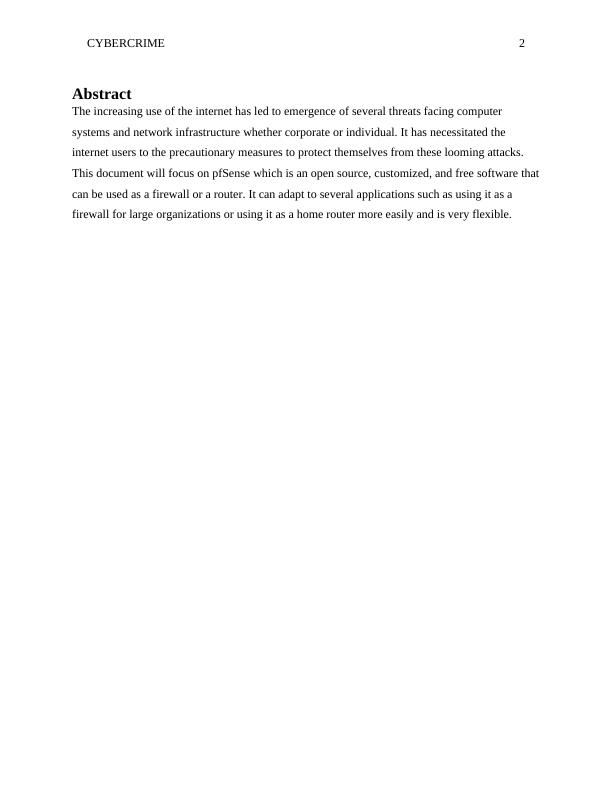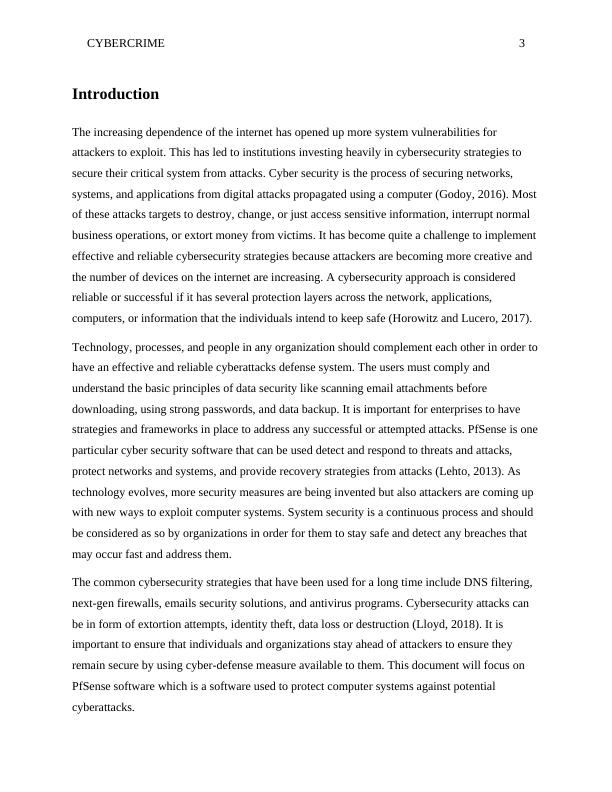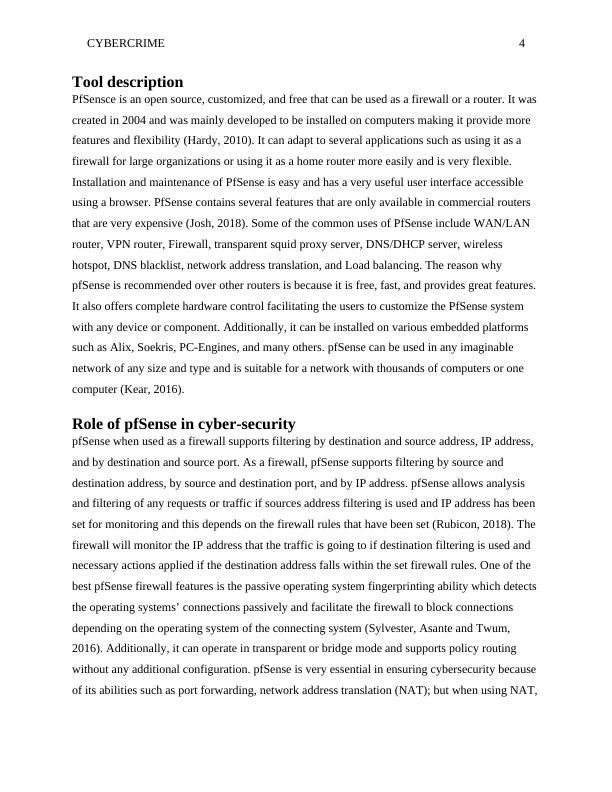PfSense: A Comprehensive Cybersecurity Tool for Intrusion Detection System
Undertake an individual project to evaluate a cyber-security tool, describing its functionality and characteristics, providing screenshots of key functionality, and running a scenario to demonstrate its functionality.
Added on 2023-05-28
About This Document
This document focuses on PfSense which is an open source, customized, and free software that can be used as a firewall or a router. It explains how PfSense can be used as a comprehensive cybersecurity tool for intrusion detection system. The document describes the tool, its role in cybersecurity, and how it can be used to set up an intrusion detection system. It also provides a step-by-step guide on how to install and configure Snort on PfSense 2.0 to facilitate real-time analysis of traffic.
PfSense: A Comprehensive Cybersecurity Tool for Intrusion Detection System
Undertake an individual project to evaluate a cyber-security tool, describing its functionality and characteristics, providing screenshots of key functionality, and running a scenario to demonstrate its functionality.
Added on 2023-05-28
End of preview
Want to access all the pages? Upload your documents or become a member.




